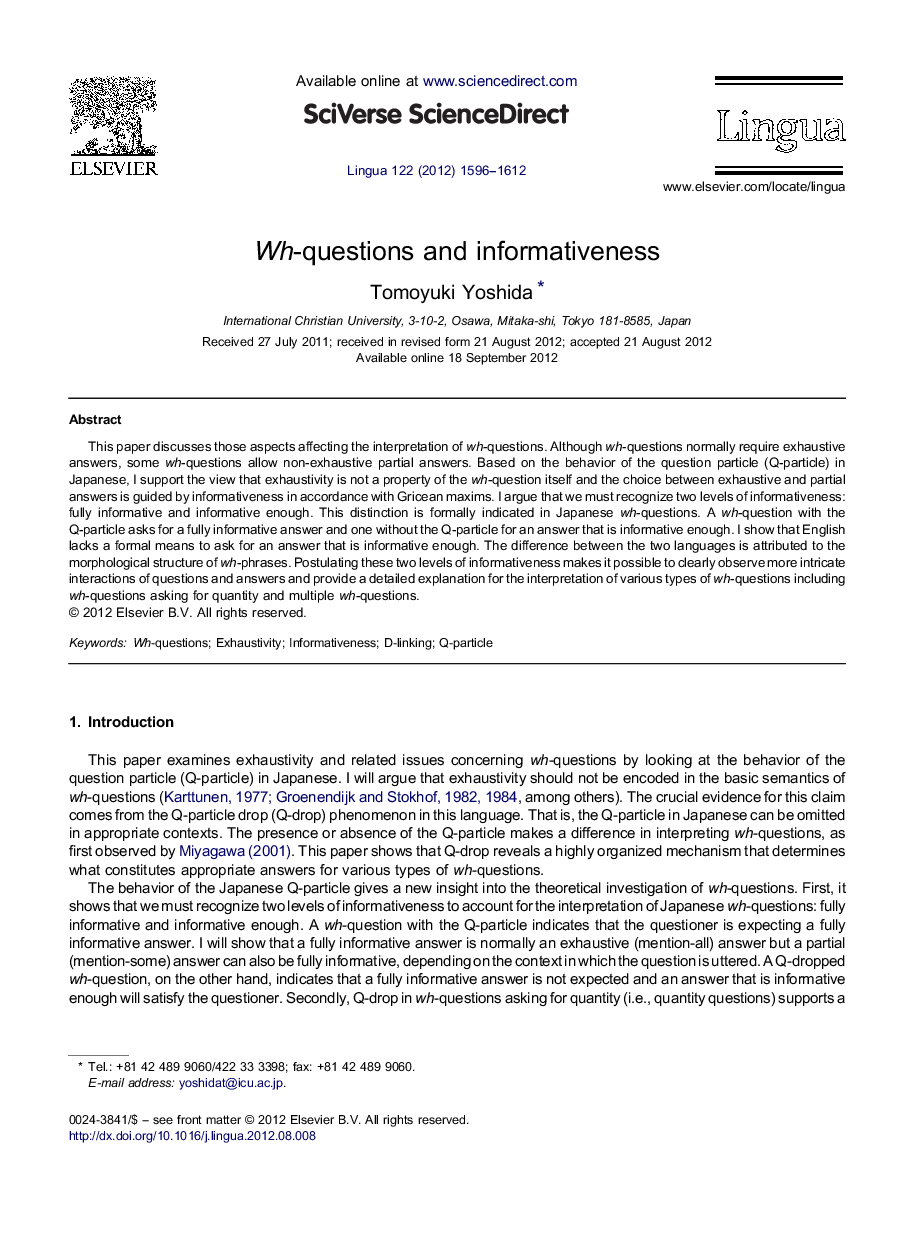| Article ID | Journal | Published Year | Pages | File Type |
|---|---|---|---|---|
| 935489 | Lingua | 2012 | 17 Pages |
This paper discusses those aspects affecting the interpretation of wh-questions. Although wh-questions normally require exhaustive answers, some wh-questions allow non-exhaustive partial answers. Based on the behavior of the question particle (Q-particle) in Japanese, I support the view that exhaustivity is not a property of the wh-question itself and the choice between exhaustive and partial answers is guided by informativeness in accordance with Gricean maxims. I argue that we must recognize two levels of informativeness: fully informative and informative enough. This distinction is formally indicated in Japanese wh-questions. A wh-question with the Q-particle asks for a fully informative answer and one without the Q-particle for an answer that is informative enough. I show that English lacks a formal means to ask for an answer that is informative enough. The difference between the two languages is attributed to the morphological structure of wh-phrases. Postulating these two levels of informativeness makes it possible to clearly observe more intricate interactions of questions and answers and provide a detailed explanation for the interpretation of various types of wh-questions including wh-questions asking for quantity and multiple wh-questions.
► The question particle in Japanese clarifies certain issues of exhaustivity in wh-questions. ► Exhaustivity is a semantic property of answers. ► The Maxim of Quantity provides principled explanation for interpretation of single wh-questions, degree questions, multiple wh-questions, and wh-questions with quantifiers.
